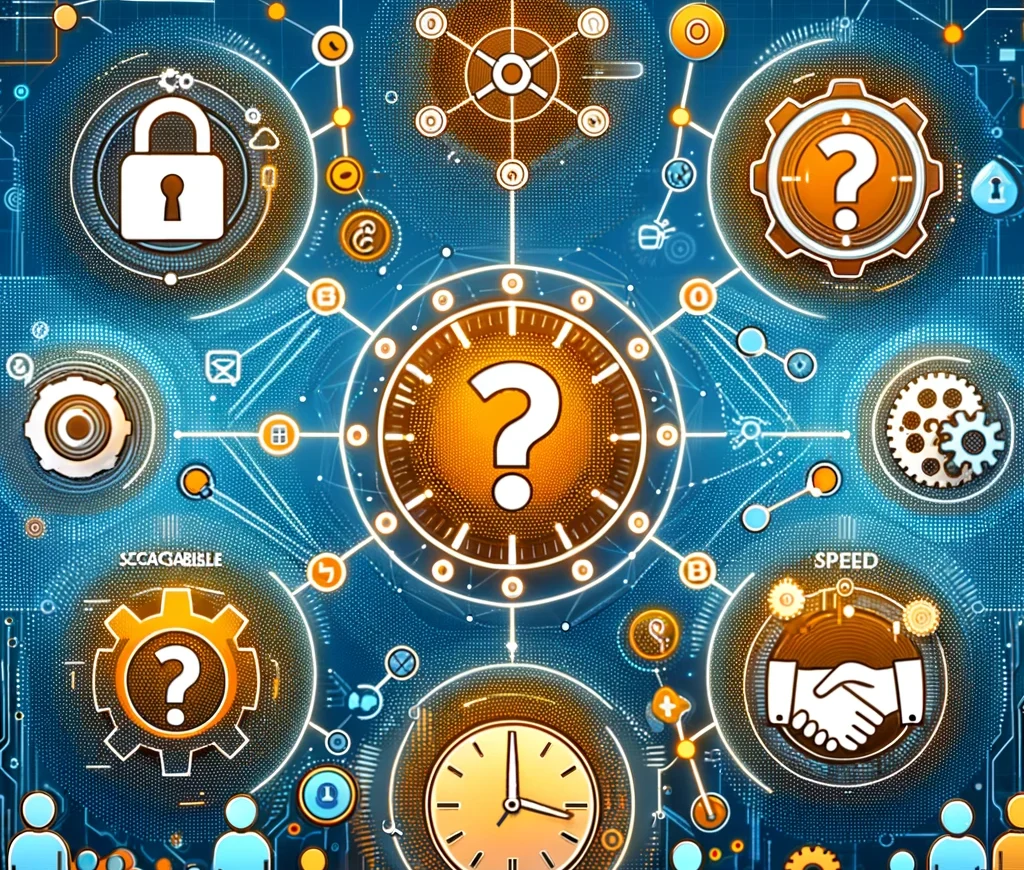Choosing the right blockchain for your Web3 product is becoming more important as the demand for decentralized applications (dApps) and Web3 products continues to grow.
In this expert guide, we’ll show you how to select a blockchain platform and choose the best one for your Web3 product.
1. Where are my target users already active and which blockchains do they use?
Looking at user activity and existing wallets is important; check the blockchains they use, the wallets they hold and the assets they transact with. Building your Web3 product on a blockchain where most of your userbase is already engaged can facilitate adoption and streamline user onboarding. Conduct market research and study user demographics to identify the blockchain platforms with the most active user communities.
2. What other similar products have been successfully deployed on this blockchain?
Researching similar products in your category that have been successfully deployed on a blockchain you plan to use can provide valuable insights. Those similar products and their success stories will show you whether the technology aligns with your use case and has demonstrated its effectiveness. Analyze the success stories and challenges faced by these products to determine the suitability of the blockchain for your Web3 product.
Look for case studies of projects that have achieved significant traction and user adoption. Analyze the challenges they faced and how the chosen blockchain platform supported their product’s functionality and scalability.
Related: How to Build a dApp on Ethereum Blockchain
3. What infrastructure is available to support non-technical users?
Apart from core protocol features, you should take infrastructure support for non-technical users seriously. Accessibility is important, so evaluate factors such as wallet options, ease of use and regulatory compliance.
Look for blockchain platforms with newbie-friendly and user-friendly wallets that provide intuitive interfaces and support multiple devices. Additionally, consider whether the blockchain platform supports fiat on-ramps, making it easier for users to convert traditional currencies into cryptocurrencies.
4. How scalable is the blockchain platform?
Scalability is a critical factor to consider, especially if your Web3 product is supposed to accommodate a large number of users or handle huge transaction volumes on a consistent basis.
Assess the blockchain’s scalability solutions, such as Layer 2 protocols or sharding techniques, to make sure it can handle the anticipated growth and provide a smooth user experience. Scalability solutions can help alleviate congestion and ensure smooth and efficient operations as your user base grows.
Look for blockchains that have a roadmap for scaling and a proven track record of implementing scalable solutions. So avoid blockchain, which usually has network issues when there’s an increase in transaction volume.
5. What is the development framework like?
The development framework of a blockchain platform is extremely important for the long-term success of your Web3 product. Assess the availability of developer tools, programming languages, software libraries and community support.
A robust development framework provides developers with the necessary resources to build, test and deploy their applications efficiently. Look for blockchains that offer comprehensive documentation, active developer communities and accessible developer tools.
The availability of developer support and resources can significantly impact the speed and quality of your product development, especially when you have to scale up as your user base grows.
Key Takeaways
1. Evaluate where your target users are already active and transacting to identify the best blockchain alignment.
2. Research similar successful projects in your category on different blockchains to understand their suitability.
3. Assess infrastructural support like wallets, fiat on-ramps and ease-of-use for non-technical users.
4. Analyze scalability solutions like layer-2 protocols to determine capacity for high growth.
5. The development ecosystem, including tools, documentation and community backing, is vital for long-term support.
Frequently Asked Questions
1. How do I know which blockchain my target users are most active on?
Conduct market research on user demographics and activity analytics through blockchain explorers and network data to see dominant platforms and transactions.
2. What similar Web3 products can indicate if a blockchain is a good choice?
Find use-case-specific products, ideally with traction and case studies, successfully deployed in your category on the blockchain. Analyze their journey to understand suitability.
3. Why is the developer ecosystem important in selecting a blockchain?
Robust documentation, tools, support channels and engaged developer communities fundamentally impact the speed and quality of building and maintaining a Web3 product long-term.
4. What scalability solutions should I research around blockchain selection?
Assess layer-2 scaling techniques like plasma chains or rollups as well as base-layer upgrades like sharding that maintain decentralization while increasing transaction throughput.
5. What are the checklists for choosing a blockchain platform?
- Assessing where your target users are active and transacting
- Researching similar successful products in your category
- Evaluating infrastructure like wallets, fiat on-ramps and ease-of-use
- Analyzing scalability techniques and capacity
- Reviewing the developer ecosystem, including tools, documents and support
- Checking costs, transaction speed and data storage
6. Which blockchain is the best for building Web3 products?
There is no single “best” blockchain for all Web3 products. Leading options to consider include:
- Ethereum is the most developed ecosystem for decentralized apps and Web3 products so far.
- Solana: fast and scalable but more centralized. Attracting new Web3 projects.
- Polkadot: Interoperability focus for connecting other blockchains.
- NEAR Protocol: Developer-friendly with low fees and a carbon-neutral platform.
- Cardano is a robust peer-reviewed platform that is still maturing its capabilities.
The right blockchain depends on the specific product’s priorities and target users. Thoroughly evaluating multiple options based on technical fit, user base and long-term product roadmap is recommended.









